While the world holds more than 300 species of hummingbirds, fewer than a couple of dozen travel so far into the north as to reach the United States. Only a handful can be found remaining here year-round. These jewel-feathered treasures are beloved, with thousands of yards welcoming them using nectar-rich flowers and hummingbird feeders for the delight of eager backyard birders. A bit of travel will be necessary to see all of the most common hummingbirds of the continental United States. In this article, we’re going to take a look at the most common hummingbirds that you can find in the continental United States.
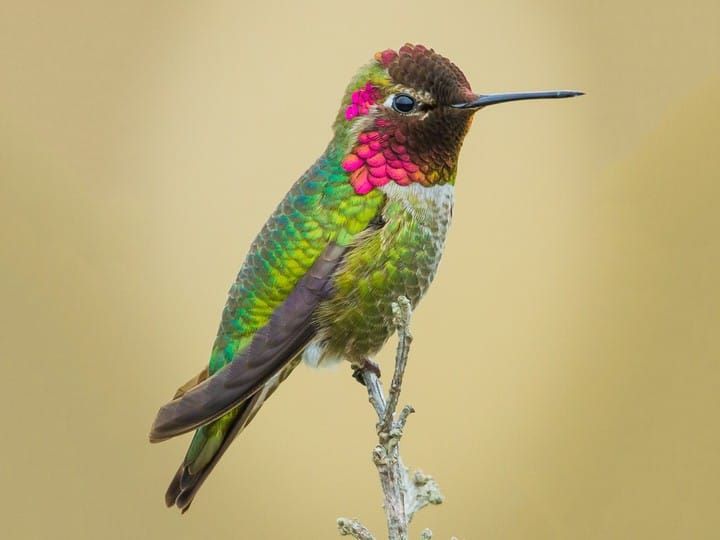
Common On The East Coast: Ruby-throated Hummingbird
The only regular hummingbird visitor to the eastern half of the United States, this species is of a medium size and its males boast its name-giving bright red throat. They also have black chins and masks extending behind the eyes. Iridescent green feathers cover the tops of their heads and their backs, while their underparts are feathered in pale grey with a wash of green on their bellies’ sides. Females are duller than males, with white chins, throats, and bellies. Buff-colored feathers cover their flanks, while their backs are green.
Ruby-throated hummingbirds have a breeding range stretching from the Gulf Coast into southern Canada, sprawling across the central and eastern United States. It is the sole hummingbird to breed in the part of the U.S. extending east of the Mississippi River. Some of them winter in southern Florida, while most journey to southern Mexico. Attracting them is best done with nectar feeders and native plants boasting flowers that are long and tubular. Interesting to note is that this hummingbird has legs so short that walking or hopping is impossible for them. They shuffle down perches.
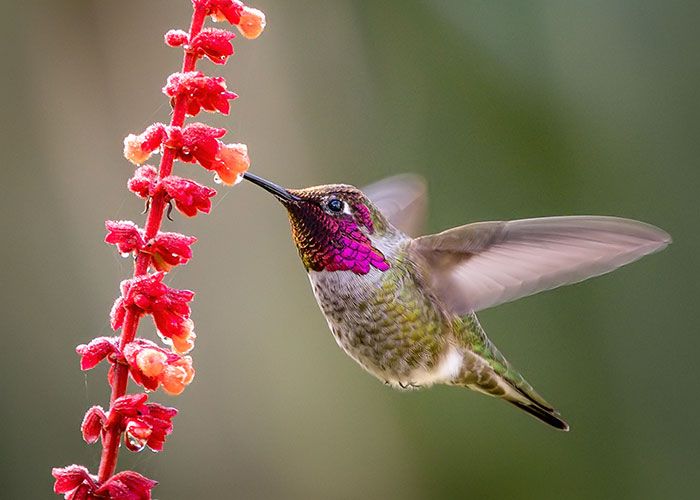
Most Common Hummingbirds On The Pacific Coast: Anna’s Hummingbird
The Pacific Coast’s most common hummingbird, these bejeweled beauties have males best known for an iridescent pinkish-red hood and throat. Their underparts mix green and grey, while the tails and backs are dark green. Typically, the male Anna’s hummingbird sports a broken white ring about the eye. Females are duller than males, with a green body and cap. A white-tipped tail and a patch of metallic red or purple at the throat adorn many females.
Anna’s hummingbirds are unique in that they do not migrate much; some do not at all. They are year-round dwellers from the southern stretches of British Columbia south through northern Mexico. Their varied habitats range through deserts, woodlands, mountains, gardens, and chaparral. Attract them year-round with home-made nectar of water and table sugar, setting it out in a hummingbird feeder. Notable about Anna’s hummingbirds are their dramatic mating displays. The male hovers before his beloved, flies straight upward, reaching heights of up to 130 feet, and then plummets, diving straight downward to culminate in a loud squeak before his chosen one.
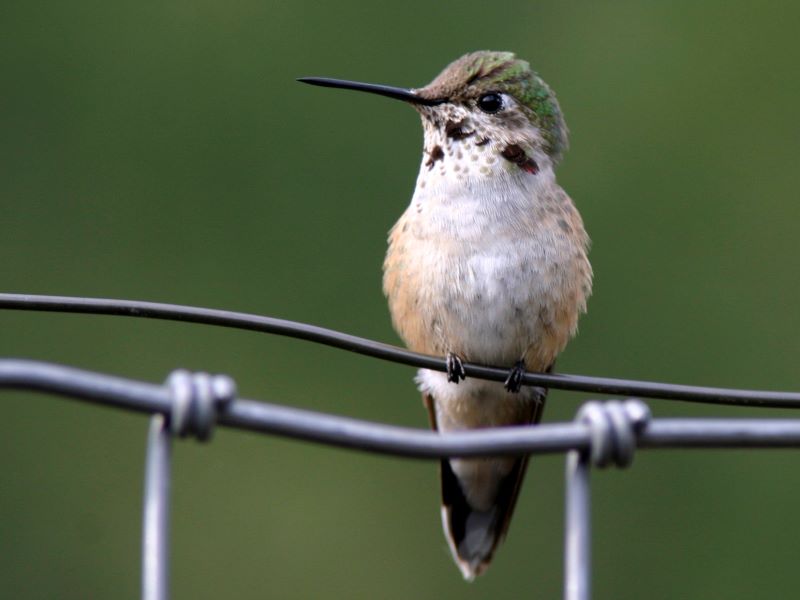
Common In The West: Broad-tailed Hummingbird
This species of hummingbird is almost a twin to the Ruby-throated hummingbird, but their ranges do not cross. Broad-tailed hummingbirds dwell in the western portion of the United States. Males boast that glorious, iridescent red throat, the crowning feature next to the green upper portions, white breast, and buff flanks. Females are larger than males, with a green head and back, speckled throat, white breast, and brownish belly.
Broad-tailed hummingbirds live in mountain meadows, breeding at elevations reaching 10,500 feet. Their breeding range extends from eastern California, into Idaho, and through the Rocky Mountains to western Texas, southern Arizona, and Mexico. You can only find them in the United States for a period of a few months. Look for them from late May into early August.
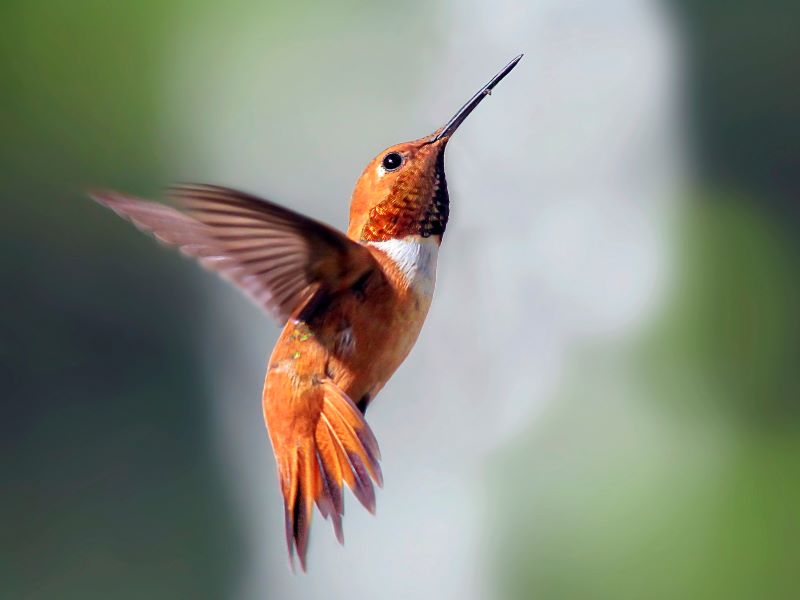
Also Common In The West: Rufous Hummingbird
These ruddy little hummingbirds are known for their feistiness. A Rufous hummingbird that claims your hummingbird feeder or nectar-rich garden is known to relentlessly and aggressively attack, driving away other hummingbird species, even those that are much larger. Identify the males for their bright copper-orange backs and sides as well as their iridescent reddish-orange throats. They have white breasts and ear patches and are small in comparison to other hummingbirds. Females are green at the crown, back, and neck, with rufous, or copper, colored sides. Breasts and bellies are white, with some females showing off an orange or red spot on the throat.
In spring, these hummingbirds fly north along the Pacific Coast to breed in the summers in Oregon and north through southern Alaska. Then, when they return to winter in Mexico and portions of the southern United States, they take a different route, this one traveling along the Rocky Mountains. To attract them, a hummingbird feeder of homemade sugar water will suffice. Despite being only three inches in size, they make a journey of 3,900 miles twice each year.
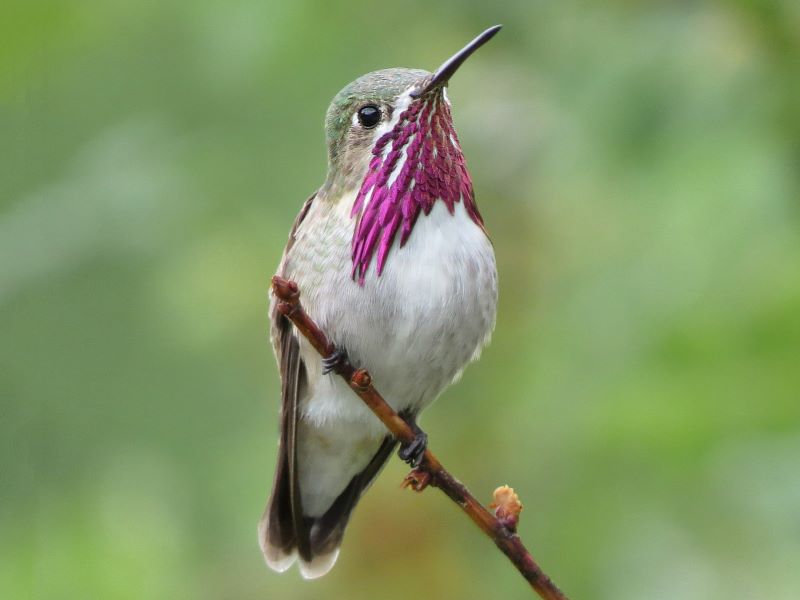
Common In The Southwest: Calliope Hummingbird
The smallest bird flitting about the United States, the Calliope hummingbird weighs in at two to three grams. The males are easy to identify with the long magenta feathers of their throats, appearing as streaks stretching down their necks. Metallic green covers their upper parts, heads, and flanks, while their breasts are white. You can spot males performing a particular dive shaped like the letter U to impress females, who boast small dark spots on throats that are white. Metallic green covers their heads and backs, while their breasts are buff. It can be difficult to distinguish Calliope Hummingbird females and Rufous hummingbird females; the latter sports longer bills on larger bodies and more copper at the tail’s base.
You can find Calliope hummingbirds after they winter in Mexico making their springtime way up California’s coast. They breed in Washington, Oregon, Idaho, Montana, Nevada, Utah, parts of Wyoming, and California. They also follow the Rocky Mountains south to winter in Mexico, rather than returning along the California coast. These tiny birds are fierce in the breeding season; observers have spotted them driving away such large birds as Red-tailed hawks.
Final Word
Hummingbirds are a delight to spot, whether hovering or flitting about like winged gems. Observing the most common hummingbirds at a backyard feeder or in a wild meadow, feeding on wildflowers, is a wonderful experience. These unique, tiny birds are worth the effort to lure or find and watch.
Interested in learning more about hummingbirds? Check out our article about how to create your very own hummingbird sanctuary in your backyard!
Leave a Reply